January 25th, 2015
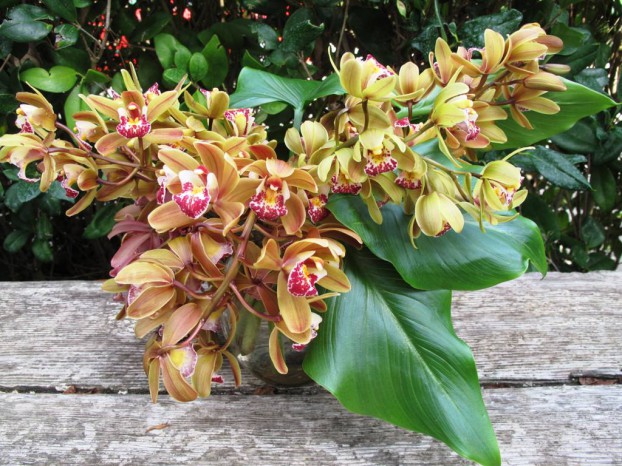
Miniature cymbidiums in all their glory, offset with calla lily foliage from Danielle Hahn’s private landscape at Rose Story Farm in Carpinteria, CA.
On the road with the Slow Flowers Challenge, I’m in Southern California this week to do some story scouting, podcast interviews and to attend the winter board meeting of the Garden Writers Association in Pasadena.
So naturally, I wasn’t able to create my own seasonal and local bouquet!
For
Week 3 of 2015, I want to showcase this exquisite arrangement designed by
Danielle Hahn at
Rose Story Farm. I visited her in Carpinteria, CA, this week (USDA Zone 10) and was delighted to see a vase of miniature cymbidium orchids and calla foliage on the kitchen island at the Hahn family farmhouse.
Rose Story is an American flower farm, specializing in organically-grown old garden roses, David Austin’s and heirloom varieties for the floral industry. That means their field-grown roses bloom mostly in May, June, July and August! Since it’s winter now, the farm’s rose production is limited.
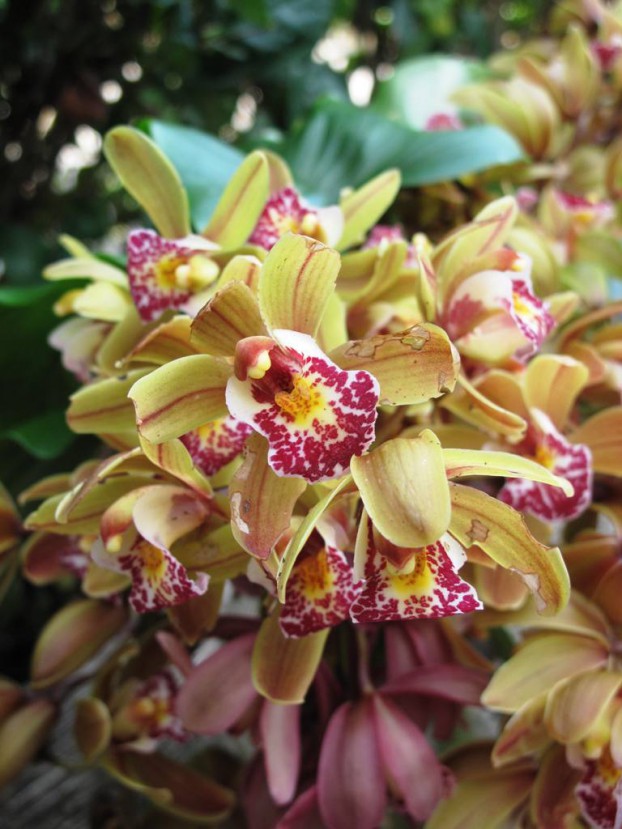
Orchids are a wonderful winter-blooming option for every climate.
A few years ago, Dani’s father brought her a wide array of winter flowers that would bloom in her garden when the roses were dormant. She wrote this on her Instagram post of these orchids: “It’s cymbidium time . . . these are a teensy variety and first to bloom. A gift from my late father who decided we needed something during our rose dormancy. One thousand plants and some are fragrant!”
There’s something quite powerful and lovely about associating our floral choices with memories and the people we love – and Dani, how beautiful that your own remembrances of your father are connected to these orchids.
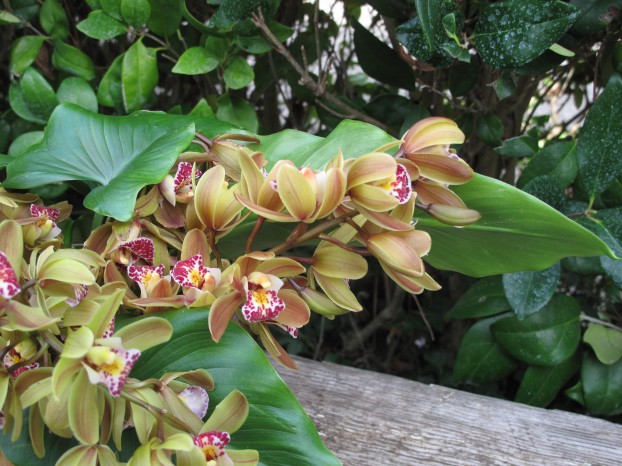
Love this glossy calla lily foliage, another seasonal option from Dani’s garden.
Okay, I know not everyone lives in Carpinteria (just a stone’s throw from Santa Barbara), so what’s going on in other parts of the country?
Here are a few designs from
Slowflowers.com Members in colder corners of the U.S.
I share these to illustrate how much beauty each region has to offer – if only you look!
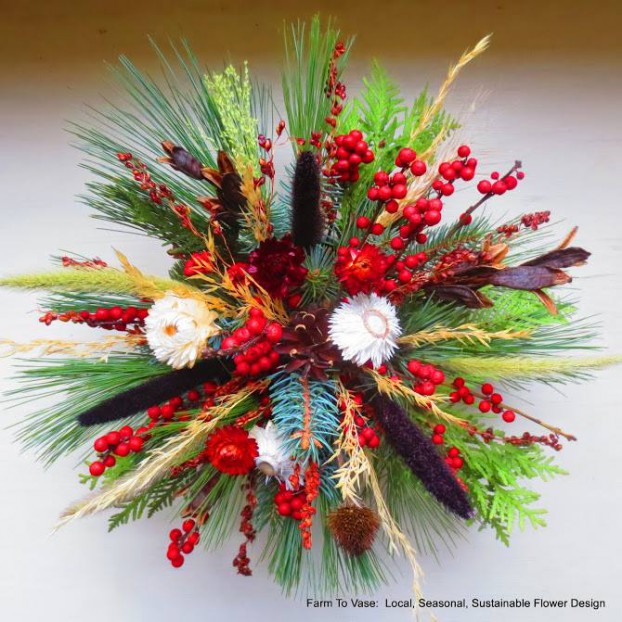
From Ann Sensenbrenner, owner of Farm to Vase in Madison, Wisconsin. This was her New Year’s arrangement featuring conifers and evergreens, ilex berries, dried grasses, dried seed heads and dried flowers.
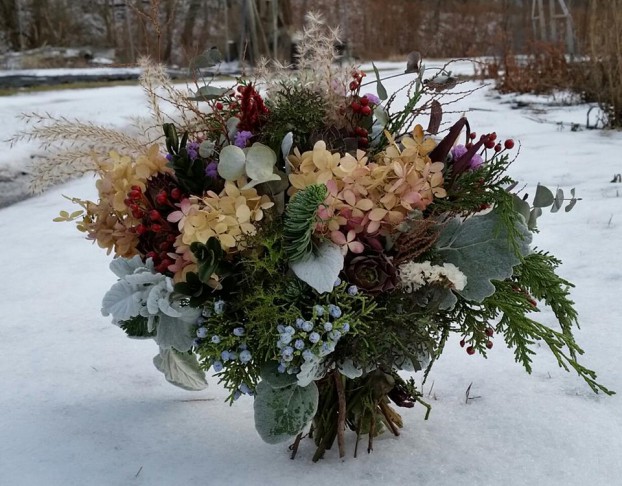
From Kate Dagnal of Goose Creek Gardens in Oakdale, Pennsylvania.
Kate posted this arrangement on Jan. 16th as part of her “Friday Night Romance” series, a peek at the bouquets she creates each week.
I love how this arrangement features late-season Dusty Miller, as well as gorgeous juniper berries, dried hydrangea flowers, dried grasses.
I actually think I see a few succulents in this bouquet, too!
TIP: From the Flower Farmer
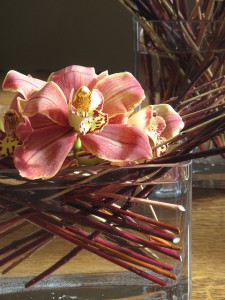
Red twig dogwood (Cornus sericea) with Cymbidium ‘Sleeping Dream Castle’.
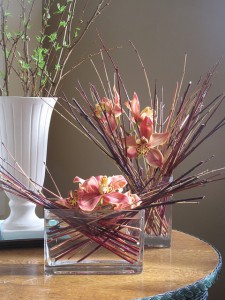
Red twig dogwood (Cornus sericea) with Cymbidium ‘Sleeping Dream Castle’
Orchids make great cut flowers!
According to Sandra Peterkort Laubenthal, whose family grows roses, lilies and orchids in greenhouses outside of Portland, Oregon, cymbidiums can be displayed as a flower-studded stem or cut individually off the stem for floating or inserting in floral tubes.
It’s hard to know, however, how fresh the flower is. “What makes the most difference is if they are cut right after blooming,” Sandra says.
“Look at the lip to see if it has turned pink or is otherwise discolored. This is an indication that the flower has been pollinated by an insect – and that dramatically shortens the cymbidium’s lifespan.”
(c) Slow Flowers: Four Seasons of Locally Grown Flowers, by Debra Prinzing
This entry was posted
on Sunday, January 25th, 2015 at 11:24 am and is filed under American Grown, Blog Posts, Creativity, floral design, Flower Farming, Gardening, General, Plants, Playfulness, Slow Flowers Challenge, Slowflowers.com the Directory of American Flowers.
You can follow any responses to this entry through the RSS 2.0 feed.
You can leave a response, or trackback from your own site.















